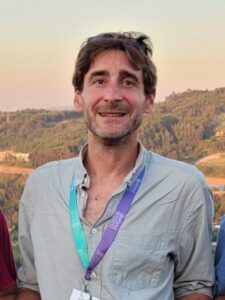The growth-laws cookbook: Ingredients and recipes for mechanistic models of ribosome allocation in bacteria and beyond
Ribosomes in cells exist in multiple functional states: actively translating, hibernating, inhibited -when perturbed with sublethal doses of drugs. Current theoretical descriptions, based on steady-state growth models, fail to reconcile observed protein synthesis at negligible growth conditions—predicting paradoxically zero active ribosomes despite measurable translation. Here, we present a mechanistic framework that moves beyond the traditional ribosome-centric view by explicitly integrating transcription dynamics and quantifying ribosome usage, thus predicting the physiological costs—both transcriptional and translational—of expressing unnecessary proteins. This approach distinguishes active from inactive ribosome pools, revealing that even at slow growth, a significant fraction of ribosomes actively maintains protein levels against degradation. Our model predicts finely coordinated initiation and elongation rates, stabilizing ribosome densities across varying physiological states, and provides quantitative insights into ribosome sequestration by hibernation factors.
Short bio
Luca Ciandrini is a theoretical biophysicist, currently Associate Professor at the University of Montpellier and junior member of the Institut Universitaire de France. His research specializes in modeling mRNA translation using nonequilibrium traffic models. Recently, he has focused on quantitative physiology and has initiated experimental activities to complement the theoretical approach.
Laboratory of the speaker
University of Montpellier
Invited by
Manish KUSHWAHA




